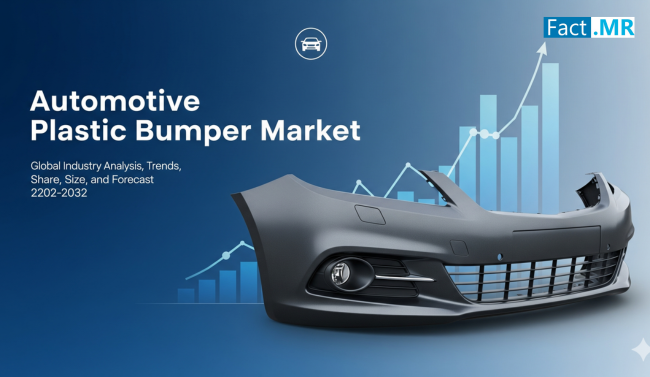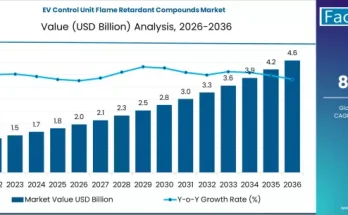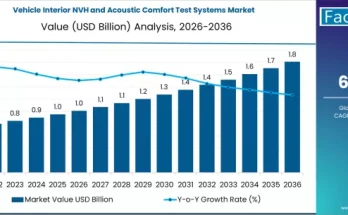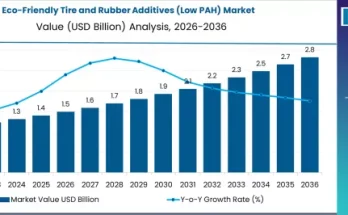The automotive plastic bumper market is witnessing dynamic growth, fueled by the increasing demand for lightweight, durable, and cost-effective vehicle components. Plastic bumpers, which are integral for vehicle safety and aesthetics, are gradually replacing traditional metal bumpers across various segments of the automotive industry. These bumpers not only enhance vehicle design but also improve fuel efficiency by reducing overall vehicle weight, making them a crucial part of modern automotive manufacturing.
Market Overview
Plastic bumpers are manufactured using advanced polymer materials such as polypropylene, polyurethane, and thermoplastic olefins, which offer excellent impact resistance, flexibility, and ease of molding. The adoption of plastic bumpers reflects the automotive industry’s focus on lightweight components, fuel economy, and eco-friendly solutions. Furthermore, the increasing emphasis on safety standards and vehicle design aesthetics has driven the demand for high-quality plastic bumpers.
The market growth is supported by innovations in material science, including the development of reinforced plastics, composites, and advanced coatings, which improve durability and resistance to scratches, impacts, and harsh weather conditions. Additionally, technological advancements in injection molding and automated manufacturing processes have enhanced production efficiency and scalability for automotive plastic bumpers.
Regional Insights
North America
North America has emerged as a significant market for automotive plastic bumpers, supported by a strong automotive manufacturing base and high consumer preference for vehicles equipped with modern safety features. The region’s stringent safety regulations and emission norms have encouraged automakers to adopt lightweight materials, including plastic bumpers, to meet regulatory compliance while maintaining vehicle performance.
Europe
Europe is a key player in the automotive plastic bumper market, with an emphasis on sustainability and eco-friendly manufacturing practices. European automakers are increasingly integrating recyclable plastic materials into bumper production, aligning with green initiatives and reducing carbon footprints. The adoption of lightweight plastic components is also driven by the region’s focus on fuel-efficient vehicles and electric mobility.
Asia-Pacific
Asia-Pacific is witnessing rapid growth in the automotive plastic bumper market due to the expanding automotive production industry and rising consumer demand for passenger vehicles. Countries with burgeoning automotive sectors are increasingly adopting plastic bumpers as a standard component in both commercial and passenger vehicles. Moreover, investments in advanced manufacturing facilities and local production capabilities are further boosting market growth in the region.
Key Trends & Forecast
Lightweight Materials and Fuel Efficiency
A key trend in the automotive plastic bumper market is the adoption of lightweight materials to enhance fuel efficiency. By reducing vehicle weight, plastic bumpers contribute to improved mileage, lower emissions, and better overall vehicle performance. This trend aligns with the global focus on environmental sustainability and the growing adoption of electric and hybrid vehicles.
Advanced Safety Features
Modern plastic bumpers are being designed with integrated safety features, such as energy-absorbing structures and impact sensors. These features improve crash performance and protect passengers during collisions, thereby meeting evolving automotive safety standards. Manufacturers are increasingly collaborating with research institutions to develop bumpers with superior impact resistance and crashworthiness.
Customization and Aesthetics
Plastic bumpers offer flexibility in design, enabling automakers to enhance vehicle aesthetics through sleek, aerodynamic shapes and integrated styling features. Consumer demand for personalized vehicles has led to the production of bumpers in various finishes, colors, and textures. This trend supports the market for premium and luxury vehicles where visual appeal is a major differentiator.
Recyclable and Eco-Friendly Materials
With increasing environmental awareness, the automotive plastic bumper market is witnessing a shift towards recyclable and sustainable materials. Manufacturers are investing in bio-based polymers and other eco-friendly plastics to produce bumpers that can be recycled at the end of a vehicle’s life cycle, reducing environmental impact and aligning with circular economy principles.
Technological Integration
The integration of smart technologies in plastic bumpers is gaining traction. Features such as parking sensors, cameras, and collision detection systems are being seamlessly embedded into bumper designs. This convergence of design, safety, and technology is reshaping the automotive plastic bumper market, making it an essential component of connected and autonomous vehicles.
Applications & End-Use Outlook
Plastic bumpers are widely used across various vehicle types, including passenger cars, commercial vehicles, and luxury vehicles.
- Passenger Vehicles: Plastic bumpers are standard in modern passenger cars due to their lightweight nature, safety features, and design flexibility. They enhance vehicle aesthetics while meeting regulatory safety standards.
- Commercial Vehicles: In commercial vehicles such as trucks and vans, plastic bumpers provide durability, ease of maintenance, and resistance to impacts, which are crucial for heavy-duty operations and frequent usage.
- Luxury and Electric Vehicles: For luxury and electric vehicles, plastic bumpers are preferred due to their ability to be customized, integrate smart features, and reduce overall vehicle weight, contributing to improved efficiency and performance.
The increasing adoption of electric vehicles (EVs) is further driving demand for plastic bumpers, as weight reduction directly impacts battery efficiency and vehicle range.
Competitive Landscape
The automotive plastic bumper market is highly competitive, with key players focusing on innovation, product development, and strategic collaborations. Leading manufacturers are investing in research and development to create bumpers that offer superior impact resistance, lightweight construction, and enhanced aesthetic appeal.
Strategic partnerships with automakers and component suppliers are helping companies expand their market presence and cater to regional demands. Moreover, mergers and acquisitions in the plastics and automotive sectors are shaping the market landscape by consolidating expertise, technology, and production capabilities.
Future Outlook
The automotive plastic bumper market is poised for significant growth in the coming years, driven by several key factors:
- Increasing Vehicle Production: Rising automotive production globally will continue to create demand for plastic bumpers.
- Focus on Safety and Regulations: Compliance with safety standards and regulations will drive the adoption of advanced plastic bumpers.
- Sustainability Initiatives: Growing emphasis on eco-friendly and recyclable materials will fuel innovation in bumper design and production.
- Technological Advancements: Integration of smart features and advanced materials will enhance the functionality and appeal of plastic bumpers.
As automakers focus on lightweight, durable, and sustainable vehicle components, plastic bumpers will continue to play a central role in vehicle design, safety, and performance.
Conclusion
The automotive plastic bumper market is at the intersection of innovation, sustainability, and safety. By offering lightweight, durable, and aesthetically versatile solutions, plastic bumpers have become indispensable in modern vehicle manufacturing. With trends such as advanced materials, technological integration, and eco-friendly production gaining traction, the market is poised for continued expansion.
Organizations operating in this market must stay abreast of emerging trends, invest in research and development, and adopt sustainable practices to remain competitive and meet the evolving needs of consumers and the automotive industry.



